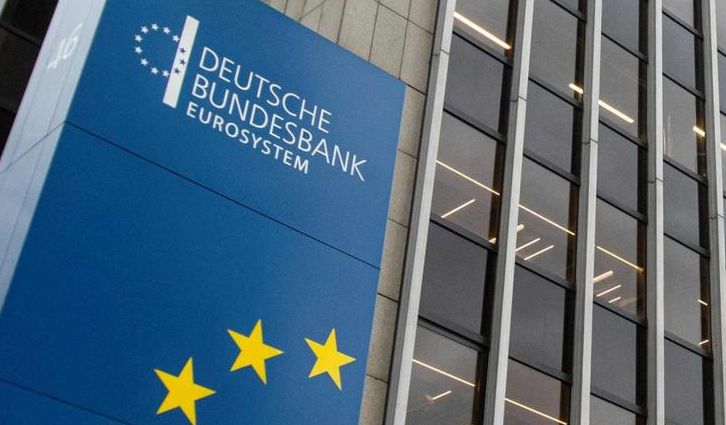Germany, a European powerhouse, is known for its robust economy and financial sector. At the heart of this sector is the Germany National Bank, the Deutsche Bundesbank. As a human and country expert, I will provide you with a detailed article on the history, functions, and significance of the Deutsche Bundesbank, including its role in shaping Germany's economic landscape. Additionally, I will provide answers to some commonly asked questions about the bank to help you gain a deeper understanding of its operations.
History of Deutsche Bundesbank
The Deutsche Bundesbank was established on July 1, 1957, in Frankfurt, Germany, as the successor to the Bank Deutscher Länder. The bank was created to oversee monetary policy in the newly formed Federal Republic of Germany and to help rebuild the country's economy after World War II.
Initially, the bank was responsible for issuing the German mark and regulating the country's banking system. Over time, its role expanded to include supervising banks, managing payment systems, and ensuring the stability of the financial system.
Structure of the Germany National Bank
Board of Directors
The Deutsche Bundesbank is headed by a board of directors that is responsible for the bank's overall management and direction. The board is made up of nine members, including the president, vice-president, and seven other members who are appointed by the Federal President on the recommendation of the German government.
Central Office and Regional Offices
The bank's central office is located in Frankfurt, Germany, and oversees the bank's operations and activities. The bank also has nine regional offices located throughout Germany, which are responsible for supervising banks and ensuring compliance with banking regulations.
Departments and Divisions
The Deutsche Bundesbank is divided into several departments and divisions, each of which is responsible for a specific function or area of operations. These include the Monetary Policy Department, Banking Supervision Department, Payment and Settlement Systems Department, and Financial Stability Department, among others.
Functions of the Germany National Bank
Monetary Policy
The Deutsche Bundesbank is responsible for implementing monetary policy in Germany. It does this by setting interest rates and controlling the money supply to maintain price stability and support economic growth.
Banking Supervision
The Deutsche Bundesbank is responsible for supervising banks in Germany to ensure their safety and soundness. It works closely with the European Central Bank (ECB) to oversee banks that operate in multiple countries in the Eurozone.
Payment Systems
The Deutsche Bundesbank manages payment systems in Germany and ensures that they are efficient, secure, and reliable. It also works with other central banks in the Eurozone to develop and implement payment systems that promote cross-border payments and transactions.
Financial Stability
The Deutsche Bundesbank is responsible for ensuring the stability of the German financial system. It monitors financial markets and institutions, assesses risks to financial stability, and takes appropriate measures to address any threats to financial stability.
Significance of the Germany National Bank
Influence on the German Economy
The Deutsche Bundesbank plays a significant role in shaping the German economy. Its monetary policy decisions impact interest rates, inflation, and economic growth, making it a key player in the country's economic landscape.
Role in the Eurosystem
As a member of the Eurosystem, the Deutsche Bundesbank is responsible for implementing the monetary policy of the European Union. It works closely with the ECB and other national central banks to ensure the stability of the euro and promote economic growth in the Eurozone.
Frequently Asked Questions
- What is the role of Deutsche Bundesbank in the Eurosystem?
The Deutsche Bundesbank is a member of the Eurosystem, which is responsible for implementing the monetary policy of the European Union. As such, it works closely with the European Central Bank and other national central banks to ensure the stability of the euro and promote economic growth in the Eurozone.
- What is the relationship between Deutsche Bundesbank and the European Central Bank?
The Deutsche Bundesbank is closely affiliated with the European Central Bank (ECB). While the ECB sets monetary policy for the Eurozone as a whole, the Deutsche Bundesbank is responsible for implementing monetary policy in Germany. The bank also works closely with the ECB to ensure the stability of the euro and promote economic growth in the Eurozone.
- How does Deutsche Bundesbank supervise banks in Germany?
The Deutsche Bundesbank is responsible for supervising banks in Germany to ensure their safety and soundness. It does this by conducting regular examinations of banks, assessing their financial condition, and monitoring their compliance with banking regulations.
- How does Deutsche Bundesbank ensure the stability of the financial system?
The Deutsche Bundesbank is responsible for monitoring financial markets and institutions, assessing risks to financial stability, and taking appropriate measures to address any threats to financial stability. It works closely with other central banks in the Eurozone to ensure the stability of the financial system.
- How does Deutsche Bundesbank influence the value of the euro?
The Deutsche Bundesbank's monetary policy decisions, as well as its participation in the Eurosystem, can influence the value of the euro. By setting interest rates and controlling the money supply, the bank can impact inflation and economic growth, which can in turn impact the value of the euro on the global currency markets.
Conclusion
The Deutsche Bundesbank is an integral part of Germany's financial sector, playing a significant role in shaping the country's economic landscape. As a member of the Eurosystem, it also plays a crucial role in promoting economic growth and ensuring the stability of the euro. By understanding the bank's history, structure, functions, and significance, we can gain a deeper appreciation for its role in the German and European economies.
References
- "The Bundesbank: From the Deutsche Mark to the Euro." European Central Bank, https://www.ecb.europa.eu/pub/pdf/other/thebundesbankfromthedmtotheuroen.pdf. Accessed 7 April 2023.
- "Structure and Organization." Deutsche Bundesbank, https://www.bundesbank.de/en/bundesbank/organisation/structure-and-organization. Accessed 7 April 2023.
- "Functions." Deutsche Bundesbank, https://www.bundesbank.de/en/bundesbank/tasks/functions. Accessed 7 April 2023.
